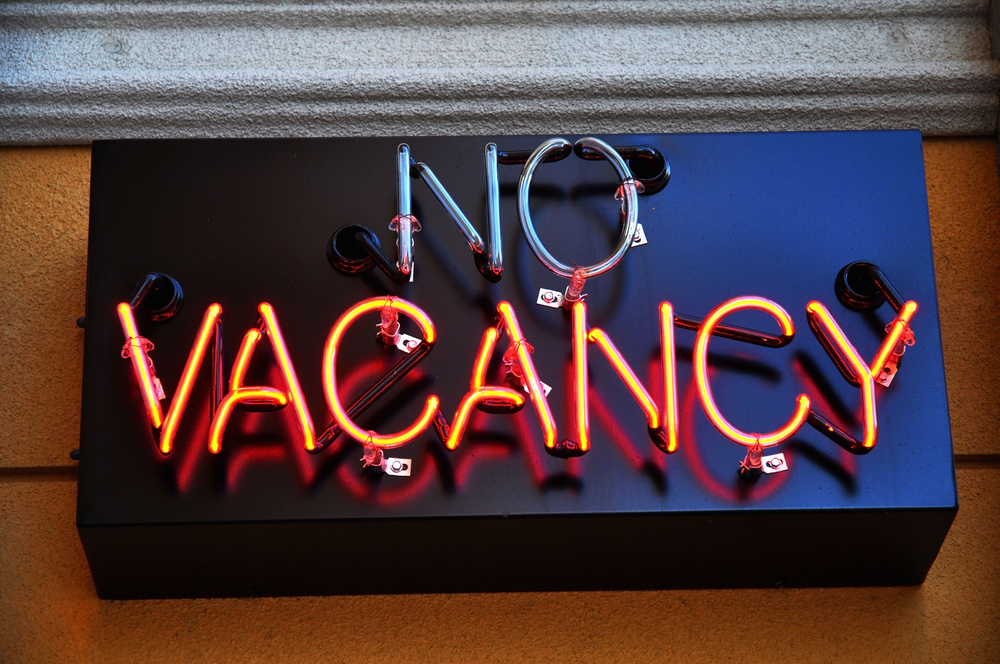
So you’ve founded a startup. Congrats!
Now it’s time to hit that stack of resumes.
You might think that you have better things to do as a founder, like raising funding, securing partnerships, and generally being the face of the company. But your number one job is to build a successful company, and you do that by hiring the right people.
It can be intimidating. How do you know who the right people are? What if you hire the wrong people?
Some of these questions you’ll know how to deal with, but other answers will just have to come with experience. As someone who’s been through it before, I can shed some light on some of the things you’ll likely run into.
Here’s what I learned from building our team at PolicyGenius.
Getting started will be tough
No other part of founding a startup is easy, so why should hiring be any different?
When you’re first starting out you won’t have an established reputation to work with. A huge customer base, month-over-month revenue growth, celebrity endorsements – those will all come later… Well, except maybe the celebrities.

But even though you don’t have a track record, you do have something else to sell: a vision. And the kind of person you’ll looking for is someone who can see the big picture and look past where the company is now to where you’re going to be. It might be a struggle to get people on board, but the ones you end up with will usually be the ones you wanted anyway.
While you’re going through this uphill battle, you might be tempted to rush through the hiring process. The average time to hire a new employee is almost 23 days, according to Glassdoor. That seems like a lifetime.
You won’t be blamed for wanting to cut a few corners – and between phone interviews, in-person interviews, interview challenges, and finally extending an offer, you’ll find yourself with a lot of corners to cut – but don’t.
I know, there’s work to be done and you need someone to do it. Sometimes it will feel like you need anyone to do it. But resist that temptation. It’ll cost you more in money, productivity, and stress to hire the wrong person, let them go, and then go through the whole 23-day process all over again.
Have a plan – but improvise
As Mike Tyson famously said:
Everyone has a plan until they get punched in the face.
While there aren’t many pearls of wisdom you should take at face value from Mr. Tyson, and I hope your startup experience will be a little less violent, it’s good advice to take for your business in general and hiring in particular.
You have a good idea of the immediate needs of your company. You know what you need to fill in the first, say, six to twelve months to make sure you build momentum and stay on your trajectory.
If you’re lucky, you’ll come across great candidates to fill those positions. And if you’re really lucky, you’ll come across someone who’s a great candidate… for a position you don’t actually have.

But value is value, and if that special someone can bring value, it’s alright to pivot and bring them on board – especially if they’re an all-around ‘athlete’ rather than a skill position player.
When you’re looking for candidates, don’t miss out on the opportunity to use good press for your recruitment effort. An interview or news coverage can shine a lot of light on your company and attract a lot of new applicants, and getting placement in the right publications can make all the difference in the type of people who apply. TechCrunch has a different audience than Business Insider, so be aware of where people are finding you and the message you’re sending through different outlets.
And even though it’s fun to be hands-on with who’s contributing to your company, hire a head of people operations as early as you can. You want (and need) someone who thinks about talent acquisition, development, HR policy, organizational best practices and culture all day, every day.
Some people will say you only need that person after a certain size (like 50 or 100 employees). I say that’s bad advice.
Don’t you want to establish your culture and expectations as soon as possible? Why wouldn’t you want best practices in place early to help your current employees and make attracting new ones even easier? If you get this wrong early on, it’s incredibly difficult to course correct later. Don’t believe me? Just ask the leadership team at Zenefits.
Tough love is your friend
Startups are like families, and you’re mean to your siblings, so don’t be afraid to pick on your potential employees, too. Okay, maybe don’t go that far, but don’t go easy on them during the interview process.
You’re allowed to be picky, and being tough on someone upfront will save you from having to be tough on them later if things don’t work out.
In addition to someone with the right skills, you need to find the right type of person for your company. That seems obvious, but someone who’s right for a huge corporation doesn’t necessarily have the same qualities you’re looking for at a startup.
It takes a different type of motivation for someone to work at a small company without the safety nets that large businesses have, and they need to handle the ambiguity, volatility, and uncertainty that comes with being at a startup.

You can save yourself a lot of time by asking what types of companies applicants are looking at. If they’re not committed to the startup grind right off the bat, you risk misjudging their motivation and expectation and hiring a bad fit.
One thing I learned from my experience recruiting at McKinsey is that you shouldn’t just go through a list and check off boxes. That’ll leave you with someone who’s perfectly adequate at a number of things, but not great at anything. What you need is someone who’s exceptional in at least one thing – someone who has a spike in a particular quality or skill.
So how do you figure out where that spike is? Test them.
Have them prepare work products or a 100-day plan for their position. Sit them down for a problem solving session or, even better, a case interview – a favorite at McKinsey – to see how they react to a real-life scenario.
More important than the outcomes someone has achieved is how they achieved them, and these types of interviews really dig into that. Candidates are able to put their problem-solving skills on display and showcase the what, how, and why of their past contributions. That’s what makes these interviews difficult but, ultimately, valuable.
The flipside to hiring is, of course, firing, and that’ll be inevitable. You’ll make some mistakes and hire people who are the wrong fit. If you find that to be the case, it’s not good for either party to put off parting ways.
Like a band-aid or a breakup, do it quick. If you don’t do it sooner rather than later, it could have a real impact on the employees who should be there: morale, productivity, and more will take a hit. Plus, it’s not fair for someone to be employed at a place where they won’t be successful.
Use the resources that are available to you
Even though you’re the founder of a startup, that’s not where your story begins. You’ve had experiences before this, so use those to make your current ride as smooth as possible.
Trust me, you’ll find bumpy spots easily enough. Hiring doesn’t have to be one of them.
If you have any previous experience recruiting, interviewing, or even making the final decision in who got hired, take what you learned and run with it.
Along that same line, networks and referrals are invaluable. They’ll be your best sources for candidates, especially at the beginning and invaluable for senior positions.

Think of how much work that cuts out: If people whose opinion you trust can vouch for a candidate’s skill, work ethic, and so on, they’re already vetted. You can skip the formalities of reviewing a resume or an introductory phone interview and get to the meat of what they can do for you.
You should also pull a page from the consulting playbook and benchmark all your key hiring decisions.
What do your competitors do in terms of titles and salaries? How do the companies you admire describe roles you’re trying to hire for? If you need to hire a specific role – say, the Head of Widgets – go talk to the Heads of Widgets at other companies so you know what good looks like (and, more importantly, what great looks like). Ask the great Heads of Widgets you meet whether there are people like them they can refer (and maybe they’ll even join you instead!).
Finally, hit the books. A lot of people who are better at hiring than you have shared their experiences, so read up on what works and what doesn’t. There are two in particular that I recommend.
- Who: The A Method for Hiring by Geoff Smart and Randy Street: It covers the nuts and bolts of hiring from the types of interviews you should conduct, how to define your mission and outcomes so applicants know what to expect, and how to best judge candidates on their measureable performances – that outcomes versus activities dynamic I talked about.
- Primed to Perform by Neel Doshi and Lindsay McGregor: This one focuses on the things that feel more nebulous in the workplace – your organization, determining culture fit, motivating your employees, and so on. These books form a pretty good one-two punch as far as setting expectations for what the hiring process should look like.
Hiring for your own company is difficult to get right, time-consuming and high-stakes. However, the payoff is that when you do get it right, it’s the most satisfying feeling you’ll have as a founder.
My proudest moments as a founder don’t have anything to do with raising money or getting press coverage or launching a product. Those moments don’t even make the top five for me.
My top moments all have to do with my employees: The intern who sweated and fogged up his glasses during an interview on a brutally hot summer day who’s since blossomed into a star contributor. The employee who just told me in his year-end review that this is the best job he’s ever had. The employee who, in her first week, tripled the bandwidth of her team.
Those are the reasons why all the effort you put into hiring are worth it.
Get the TNW newsletter
Get the most important tech news in your inbox each week.





